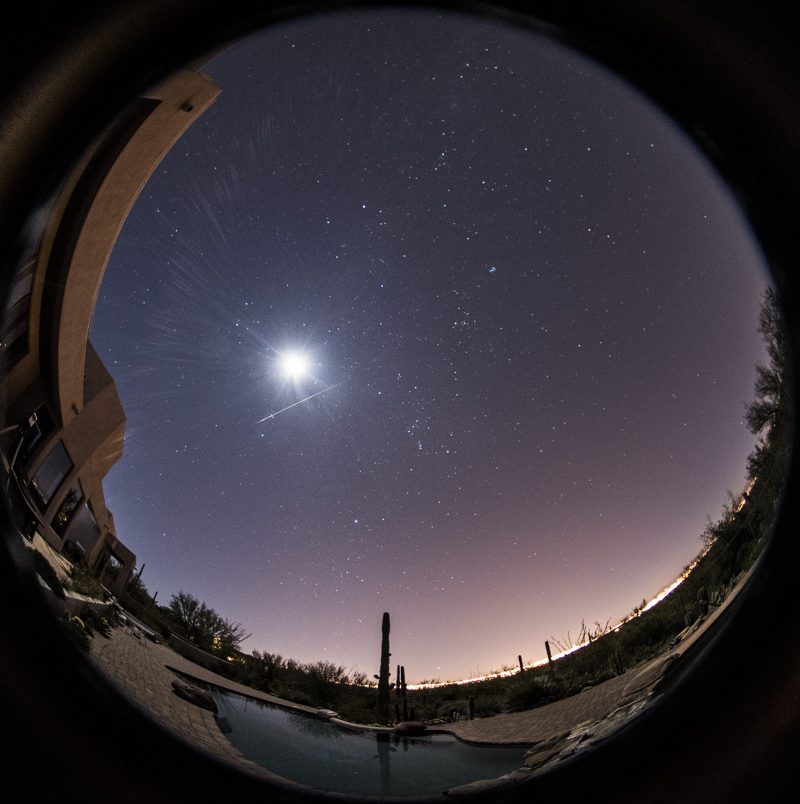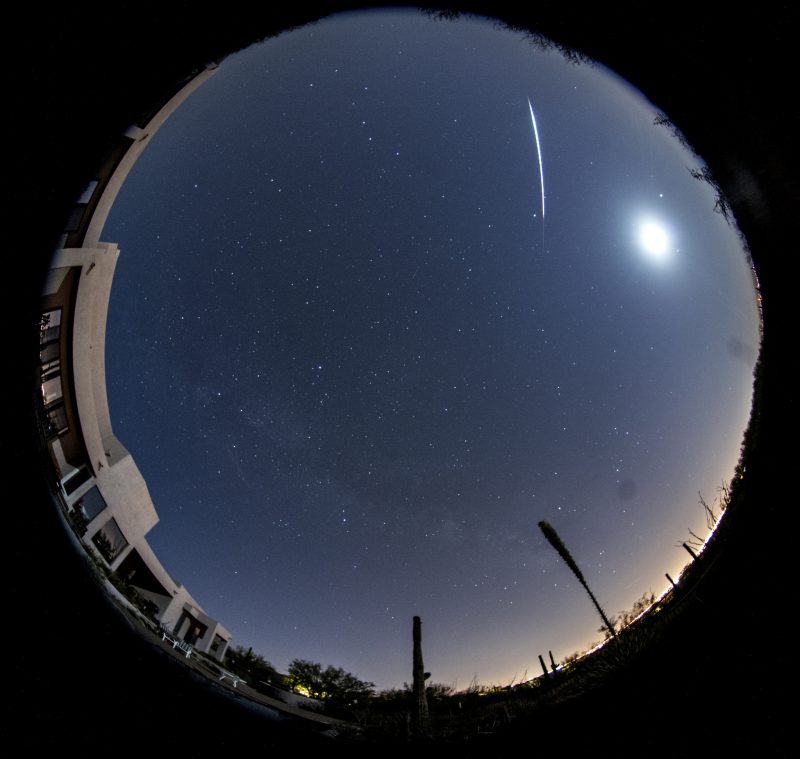
Watching meteors in moonlight
Each year, some of our favorite meteor showers compete with bright moonlight. When there’s a bright moon in the sky during the peak meteor-watching hours (usually between midnight and dawn), it doesn’t mean you can’t watch them. Even in moonlight, you’ll still see some meteors. But the number you’ll see will be decreased. Here’s our top six tips to optimize your viewing of meteors in moonlight.
1. Go out in the country
This should go without saying, but just a reminder to avoid city lights. A dark spot, like a field or a lonely country road, is best if you’re serious about watching meteors. Visit EarthSky’s Best Places to Stargaze to find a dark location near you.
2. Stand in a moon shadow
You’ll notice that a bright moon casts shadows. When you’re out there watching the Perseids in 2025, don’t stand under a wide-open sky. Instead, find somewhere that still provides you with a wide expanse of sky for meteor-viewing, but blocks out the moonlight. A plateau area with high-standing mountains to block out the moon would work just fine. If you can’t do that, find a hedgerow of trees bordering a wide open field somewhere (though obtain permission, if it’s private land). Or simply sit in the shadow of a barn or other building. Ensconced within a moon shadow, and far from the glow of city lights, the night suddenly darkens and can help you see more meteors. You can’t run from the moon, but you can sure hide from it.
3. Get comfortable, stay awhile
Bring along a blanket, some friends, a hot drink and a chair. You’ll be more comfortable with a reclining lawn chair. If several of you are watching, take different parts of the sky. If you see one, shout “Meteor!” Let your eyes rove casually in all parts of the sky. Dress warmly; the nights can be cool, even during the summer months. You’ll probably appreciate that blanket and warm drink in the wee hours of the morning.
Also, leave your cell phone in your pocket, and your laptops and tablets at home; even using the nighttime dark mode will ruin your night vision.
4. Gaze alertly, look carefully
For most meteor showers, it’s all about the count. Meteor-watchers love to count how many meteors they see in, say, an hour. But when the moon is obscuring the view, you know your meteor count will be down. So, instead of counting, look at each meteor you do see carefully. Notice the speed and colors, if any, of the meteors. Notice whether, as they streak through your sky, the meteors “pop” with brightness suddenly. Watch for exceptionally bright meteors or one that breaks up into fragments.
Also, watch for meteor trains. A meteor train is a persistent glow in the air left by some meteors after they have faded from view. Trains are caused by luminous ionized matter left in the wake of this incoming space debris. Hard to see in the moonlight, but watch for them!
5. Watch for earthgrazers and fireballs
Earthgrazers. Most meteor showers are best after midnight, including the Perseids, but you can try watching for meteors in the late evening. Late evening is the best time to catch what’s called an earthgrazer: a bright, long-lasting meteor that travels horizontally across the sky. Earthgrazers are rare but memorable, if you’re lucky enough to spot one.
Fireballs. Even in bright moonlight, you might see an extremely bright meteor. Astronomers call them fireballs, and you have a shot at seeing one while watching a meteor shower. Unlike the meteors in annual showers – which start out no bigger than rice grains and are bits left behind by icy comets – a fireball starts as a larger, rockier object. So, fireballs aren’t necessarily part of the meteor shower. But if you happen to be outside watching a meteor shower, you might see one! If you do, you can report it here.
6. Enjoy nature
Not every meteor shower is a winner. Sometimes, you come away having seen only one meteor. But consider this. If that one meteor is a pretty one, or a colorful one, or it takes a slow path across a starry night sky, then it was worth it. Maybe you simply enjoyed being outside, bathing in the moonlight, smelling the night air and chatting with a friend. Heaven!
Meteors in moonlight, by a veteran astrophotographer


More meteors in moonlight


Bottom line: Meteors in moonlight: it’s not optimal, but it’s happening for the Perseids in 2025! Here are 6 tips for watching this year’s shower.











